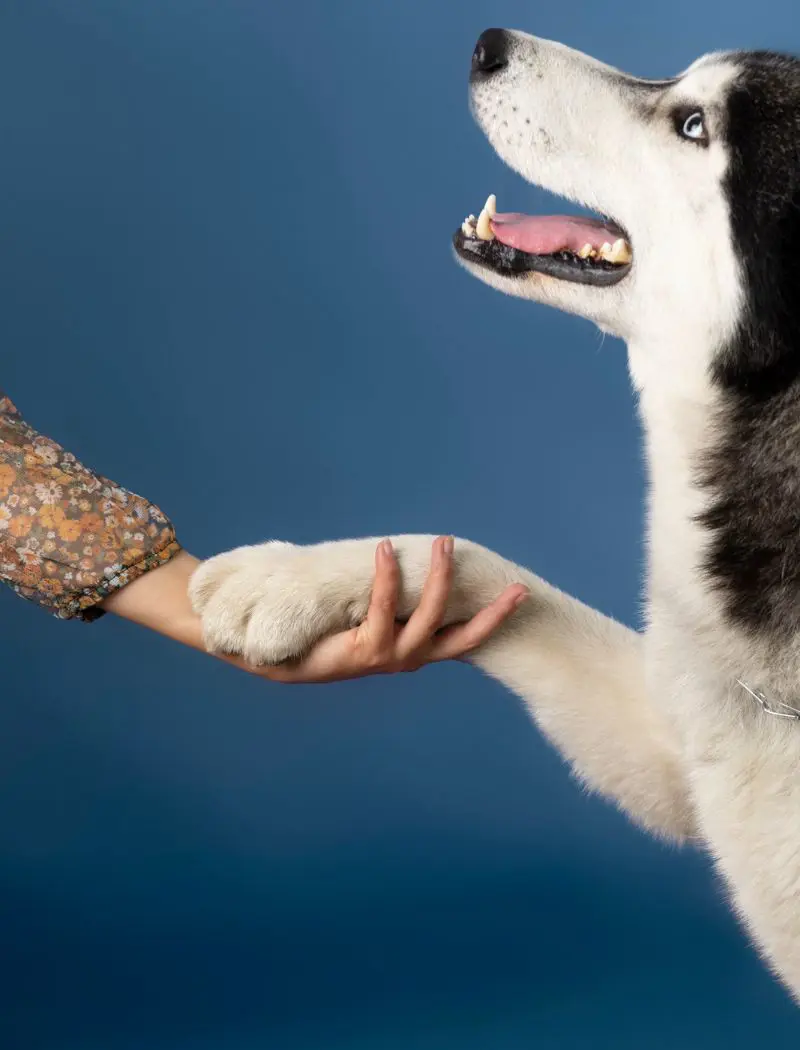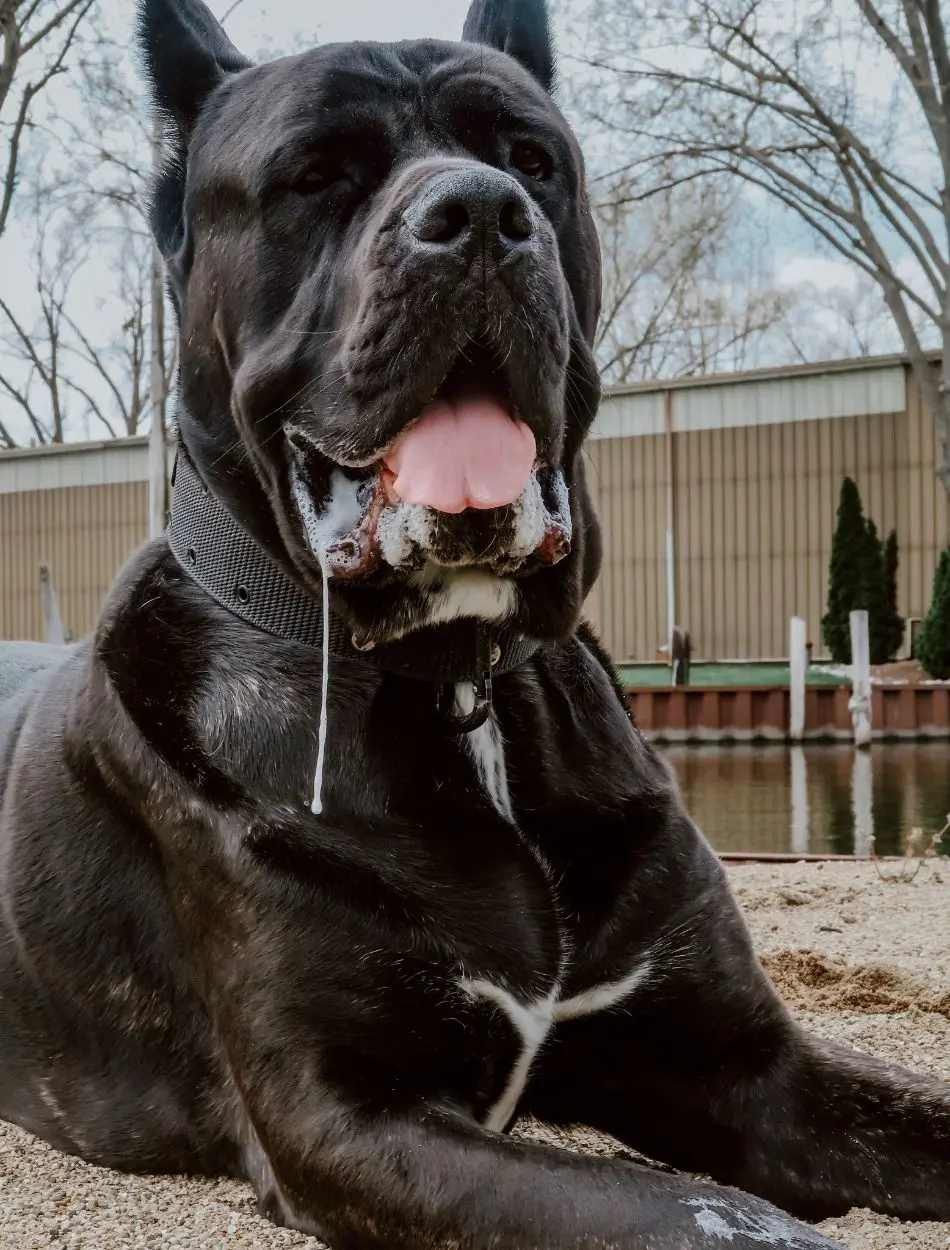18 Reasons On Why Is My Dog Limping

A dog limping can be a cause of concern and cause stress to owners. It is not normal dog behavior and can be a sign of health problems in dogs.
Understanding why your dog is limping is important to cure this problem. This article discusses 18 reasons why your dog may be limping.
1. Fracture
Fracture is one of the most common reasons for this issue. It makes it harder for your furry friend to put weight on their affected leg.
These fractures happen when the puppies are dropped or fall from furniture from a certain height. Proper conditioning can help reduce the risk of these injuries.
2. Hip Dysplasia

It is one of the generic conditions that affect big-breed dogs, and it is characterized by the lameness of hind legs. This is caused when the ball and socket of the hip don't fit together.
Dogs suffering from it can have pain and lead to limping. They may even struggle with stairs or inclined ways.
Weight control and avoiding tough activity can minimize this issue.
3. Cuts Or Insect Bites On Paws
Thorns, small sharp stones, and even biting insects can lodge themselves in between the pads of a dog's foot. It can cause cuts or pressure and can be painful.
Most of the cuts are superficial and are easily treated at home. However, the swelling signs mean you should take your pup to your vet for recovery.
Insect bites and stings on the paws can also cause limping in dogs. It can lead to redness, swelling, and discomfort in the dogs.
4. Nail Problems

Poor nutrition and improper care can lead to weak nails in dogs which can result in limping. The weakened ones are easily destroyed by varying degrees of activity and might need surgery to get fixed.
Some common nail problems include broken or loose nails, nail bed infections, ingrown nails, and auto-immune nail diseases. Make sure to trim the dog's nails to avoid this problem.
5. Sprain/ Strains
One of the common causes of limping in dogs is strains or sprains. Strain is often caused by excess jumping, playing too rough, or when the dog slips.
Sprains in dogs can also cause joint injury and cause your dog to limp. When your dog puts too much pressure on a sprained leg, it also puts pressure on the injured ligament.
This can trigger their pain and cause difficulty in walking.
6. Elbow Dysplasia

The most common signs of this problem include limping, stiffness, and standing up. The limping may appear mild and then disappear, only to come back worse later.
It is important to consult your vet and take further action if your dog suffers from this.
7. Dislocations
It is a condition where the ends of the dog's bones move out of their usual position and separate. This can occur with any joint following some trauma.
It must be treated as soon as possible to prevent further worsening and severe damage. If you see any signs of dislocation you must consult your vet and take further action.
8. Skin Problems

Skin problems might not be directly related to limping, but they can be a hidden cause in dogs that negatively affect their walks. Severe itchiness, irritation, or pain from skin conditions can cause your dog to avoid putting weight on the affected area.
Licking can further increase the discomfort and make them limp.
9. Foreign Object In Paws
Dogs are capable of stepping on foreign objects while walking or running. These objects can enter between their toes which can cause pain and limping.
This can also irritate their tissue and cause swelling in their legs. They may even lick or chew in an attempt to remove the object, which can worsen the injury and cause limping.
10. Obesity

Obesity in dogs can cause limping due to extreme strain on their joints as it increases the pressure on their legs. The joints of an overweight dog need to handle more weight than their capacity. This can cause pain and inflexibility leading to limping.
11. Age
An older dog's body goes through various changes such as stiff joints that can lead to limping. This makes it hard for them to walk around.
They are also likely to have muscle weakness that provides less support to their joints. It can ultimately lead to instability and limping.
12. Infections

Infection can also cause limping when it affects their joints or muscles. It can lead to swelling and form an abscess which creates a painful walking session for dogs.
13. Tick Disease
One of the noticeable signs of tick disease is limping, which can cause swelling and pain in the joints. This can make it difficult for the dog to walk.
Dogs may also limp to avoid putting weight on the affected legs and reduce discomfort when moving around.
14. Knee Problems

Knee problems can cause pain and instability and lead to dogs limping. A tear in their ligament can cause instability in the knee and affect their walking.
Any injury that affects the knee can cause sensitivity and exhibit limping as they try to reduce discomfort. The dog may also show signs of pain when they are touched or moved.
15. Joint Disease
Joint disease in dogs can cause their joints to degrade over time and lead to pain. It can lead to inflammation and cause swelling which causes the dogs to limp to release discomfort.
It can also manifest as stiffness which becomes more noticeable after periods of inactivity. Dogs may try to adjust to minimize the discomfort which may lead to limping.
16. Neurological Disorder

This is another main cause of limping in dogs due to issues in the nerves that control movement. The damaged nerve in the spine can affect the dog’s ability to move its legs properly.
Injuries that affect the spinal cord and brain can mess up the signals in the brain. This causes weakness and pain in the legs and leads to limping.
17. Cold Weather
Cold weather can intensify joint inflexibility in dogs that are older or have existing health conditions. It can cause the muscles to tighten and lead to joint inflexibility.
The inflexibility in the joint limits the dog’s movement and forces them to limp. Dogs may also become less active during the colder climates which can tighten their muscles and lead to limping.
They are also more likely to slip and injure themselves due to the ice in colder months. This trauma can cause discomfort and pain to the dogs and make them limp.
18. Muscle Injuries

Muscle injuries can affect the muscles needed for movement. Muscle weakness can make it difficult for dogs to bear their weight and move their legs which leads to limping.
Types Of Limping

1. Chronic Dog Limping
It is a type of limping that has been present for two weeks or more. It can range from mild to severe and does not usually improve with rest.
2. Acute Dog Limping
Acute limping in dogs happens suddenly without any signs of discomfort. It may be caused due to an injury that requires quick attention.
3. Mild Dog Lumping
It refers to a slight change in their walk as they favor one leg. This type of limping is not very noticeable and might come and go.
Minor injuries and paw problems can cause this type of limping in dogs.
4. Severe Dog Limping
Severe limping is a noticeable and significant change in their walking that requires immediate attention. The dog may lift its affected leg and not place any weight on it at all.
It is important to seek veterinary care if you spot signs of this type of limping in your dog.
Limping With Other Symptoms

If your pup is showing the following symptoms, you should take them to your vet quickly:
-
Vocalization (yelping or whining)
-
Trembling
-
Behavior changes (like hiding, unwillingness to move, fear, or reactivity)
-
Bleeding
-
Disorientation
-
An obvious fracture or dislocation
-
Swelling of the limb
-
Lethargy
-
Limb dragging
How To Treat A Limping Dog At Home

It is important to provide immediate care at home while monitoring the condition of your dog closely. Here are some of the steps you should follow to treat your limping dog at home:
-
Identify the affected leg and check for injuries.
-
Remove foreign objects and clean the area.
-
Limit your dog's activity and ensure rest.
-
Apply ice wrapped in a towel if there is swelling
-
Monitor their movement and minimize their playtime
-
Look for any signs of cuts or foreign objects in their paws
-
Avoid letting them go up and down the stairs for some time
-
Consider losing the dog's weight to reduce stress on their joints
Recent posts
Dogs
Why Is My Dog Panting? 18 Reasons For Breathing Fast
Dog owners, those in tune with their pets, can often notice a change in their companion’s behavior. When unwell or scared, some dogs hide while others seek solitude. Similarly, panting is a normal sign of tiredness or lethargy, but can also imp...
10 Reasons Behind Dogs Chewing And Licking Their Paws
Some of the most harmless behaviors dogs depict are chewing on their paws. But if this obsession catches onto your pup, well, that raises a couple of curious eyebrows. Your dog's tendency towards chewing and licking can affect general health and well...
18 Reasons Why Your Dog Is Not Eating
A skipped meal here or there is normal, but your dog consistently refusing food is the cause of concern. The reasons range from dietary issues to more serious health conditions and behavioral issues. The dog may be a picky eater or there might be som...
17 Causes Of Seizures In Dogs
Don't dismiss your pet dog's uncontrolled twitching movements as harmless shivering - you may be bearing witness to the classic signs of a seizure. These sudden and involuntary electrical disturbances can drastically impact a dog's health and even ch...
18 Reasons Why Your Dog Is Drooling So Much
While drooling in dogs is perfectly normal in certain situations, excessive or continued drooling may hint at a more serious issue that requires attention. Once you know the probable causes of this drooling in your dog, you can take some necessary st...
Why Is My Dogs Stomach Making Noises?
Any pet parent with a dog in their family can relate to the horrors of the unwarranted strange sounds occasionally coming out of their pal’s stomach. Though occasional tummy rumblings are nothing to worry about, frequent or loud noises should b...






